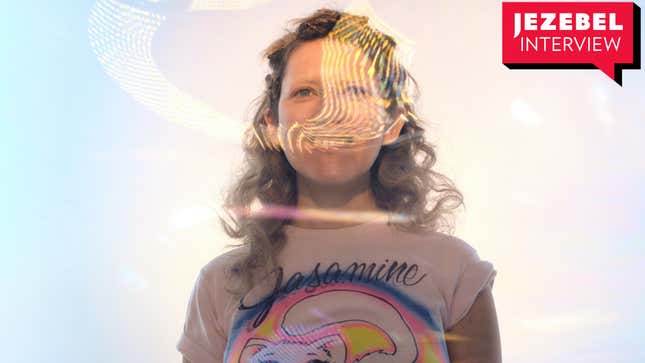

A decade ago, Montreal band No Joy was embraced by the most exclusive indie-rock circles for their impressively heavy guitars—a staggering ability to make squalling riffs and feedback sound melodious, textured, and complicated. Because of that fact, they were forever branded “shoegaze,” Best Coast’s Bethany Cosentino labeled them “the best band ever,” they signed to tastemaker record label Mexican Summer and released three critically acclaimed records in five years. And then it stopped. The music industry shifted, blogs were gone, and the band felt they had accomplished all that they could do together. They broke up.
Founding member Jasamine White-Gluz, however, has taken the opportunity to experiment under the No Joy name as a soloist over the past five years, releasing ambitious EPs where she dropped the group’s flagship guitar playing and experimented with electronics. Now, five years after the band’s dissolution and No Joy’s last full-length, White-Gluz has released Motherhood, the first and only No Joy album as a soloist. It’s an oft-confounding, genre-spanning, late-’90s worshipping, death metal dream-pop opus, and one that explores familial themes. Jezebel spoke to White-Gluz over the phone from her home in Montreal about the project’s evolution and just what it takes to commit the experience of aging as a woman to record. This interview has been edited and condescended for clarity.
JEZEBEL: You’ve said this album was inspired by the music you loved while in high school, 1997 to 1999. What music is that?
JASAMINE WHITE-GLUZ: I was really dating myself there. A lot of stuff like Massive Attack and Sneaker Pimps and Tricky that when I heard it, I wasn’t sure what kind of music it was. Because it wasn’t rock, but it wasn’t totally electronic. It was this time where artists were able to be really experimental and put out these records on major labels and get mainstream press. And honestly, [there’s] a lot of nu-metal that I loved growing up that wasn’t ironic. I loved Korn a lot and Deftones. All that stuff I loved that maybe I didn’t admit to it because it wasn’t cool. Now I don’t mind mentioning it.
I also love nu-metal, and it’s been fun to see a lot of non-men embrace that music recently, or at least do so publicly. When nu-metal was at its height of popularity, it was such a rejection of teen pop and presented as this weird, [Limp Bizkit’s] Fred Durst-branded machismo thing.
“Nookie!” Oh god. I think I dropped off nu-metal when it got post-Linkin Park. There were a lot of bands, like, Deftones, that were really making some ambitious choices that got lumped into—exactly what you said—this music that was bro-y? And the music wasn’t necessarily bro-y. Even Korn, to an extent, the early records, the subject matter is really dark and wasn’t necessarily super masculine the same way it turned into… this whole world of “rap-rock.”
It’s interesting that those were your musical touchstones, sounds of your adolescence, and yet, this album is called Motherhood. How does Motherhood appear on this record?
I’m talking about motherhood from so many different angles—from my own mother in relation to mothers, the role of mothers, who can be a mother, what qualifies someone to be a mother… but also family and aging and aging as a woman playing music. There’s always such an interest with youth in music, and I was finding it hard to find peers or role models who were my age but still making music. I was exploring all of those things and it wasn’t totally conscious. By the end of it, I realized that these songs kind of had to do with the same thing—whether it was fertility or family or death or birth—they all meddled together into Motherhood.
Aging, for women, is written about as if it’s a loss of something. Motherhood feels like a much more nuanced, ambitious challenge of that idea. I mean, the record has a ton of heavy moments, and the idea of being a mother is often viewed as being traditionally delicate.
-

-

-

-

-

-

-

-

-

-

-

-

-

-

-

-

-

-

-

-

-

-

-

-

-

-

-

-

-

-

-

-

-

-

-

-

-

-

-

-








































